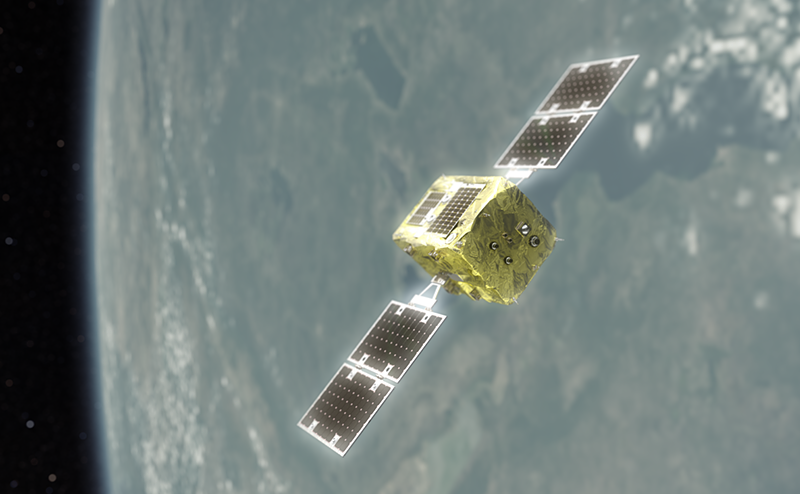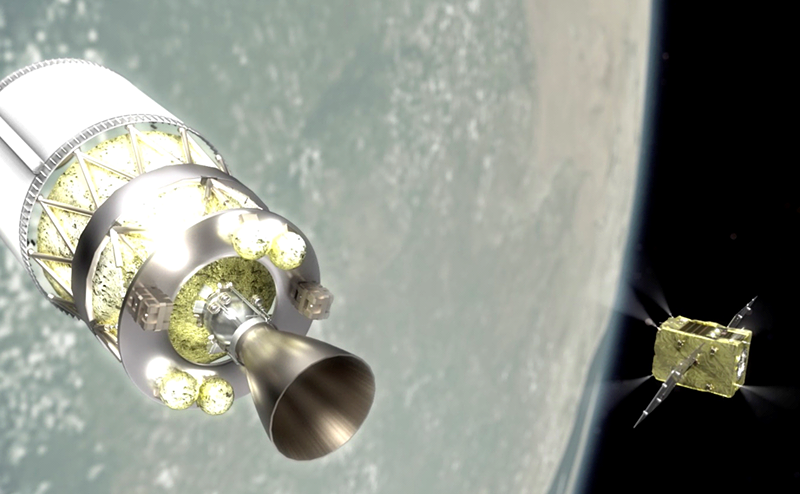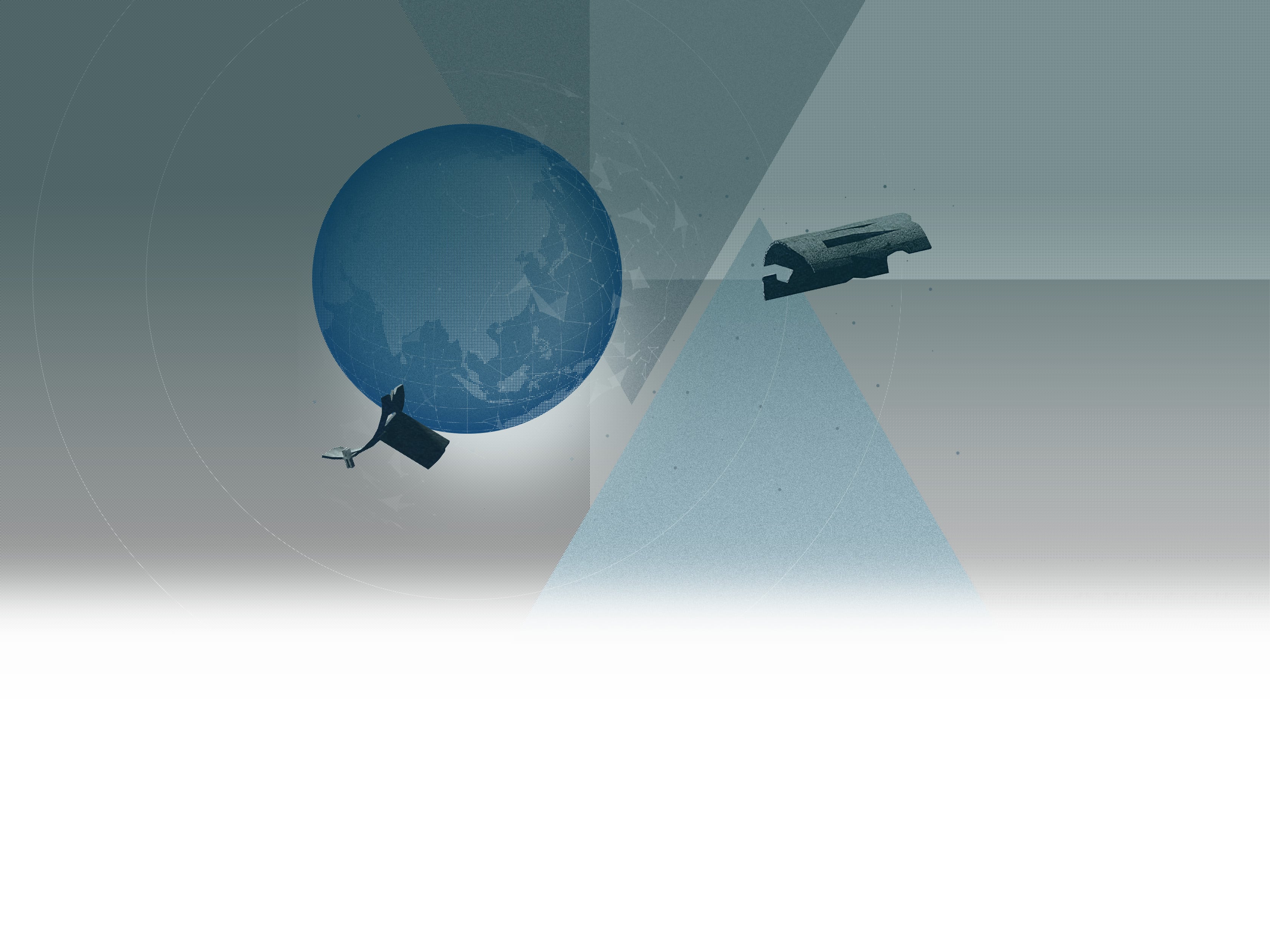
The mark uses a broom motif to represent the image of a clean space in the future through the realization of debris removal.
Outline of CRD2
Project goal
The goal of CRD2 is to "develop new space businesses starting from the space debris removal program promoted by JAXA, and Japanese companies will be able to capture new markets."
JAXA will create a market in cooperation with private sector and others seeking to commercialize space debris countermeasures, and will make efforts to contribute to Japan's international competitiveness.
JAXA also believes that it is effective to work on large space debris removal first to improve the space environment, and aims to demonstrate the world's first low-cost debris removal service technology for Japanese rocket debris.
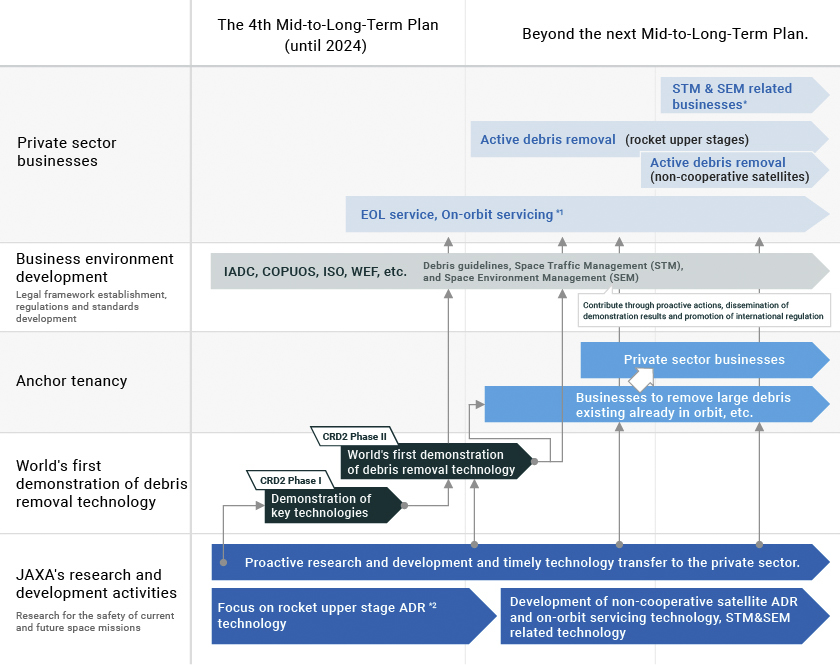
* Collision avoidance support (observation (monitoring), prediction, avoidance), EOL support, orbit change, etc.
*1 EOL: End-Of-Life (Aim to provide a service that remove failed satellites from operational orbit)
*2 ADR : Active Debris Removal
Program Structure
In the CRD2 program, removal of large debris of Japanese origin with high removal effectiveness and technologically advanced will be conducted in two phases (Phase-Ⅰ and Phase-Ⅱ).
In Phase-Ⅰ, we will conduct proximity and proximity control of space debris, a non-cooperative target, to acquire images showing the motion, damage, and degradation of debris left in orbit for long periods of time, for which there is little information worldwide.
In Phase-Ⅱ, as in Phase-8544, we will approach and control the proximity to the debris and acquire further images. Then, on-orbit demonstration of debris removal technology will be performed by removing and re-entering non-cooperative targets.
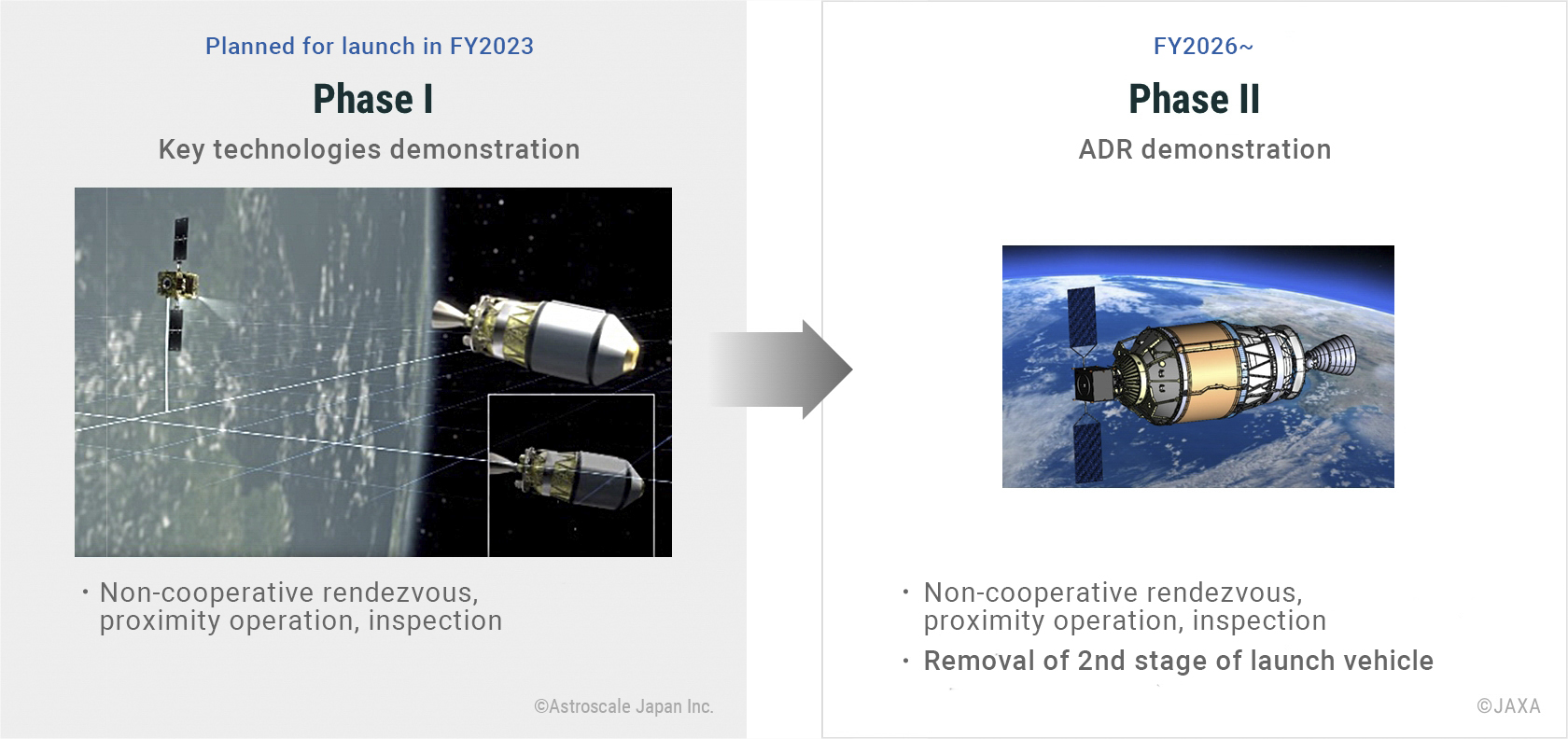
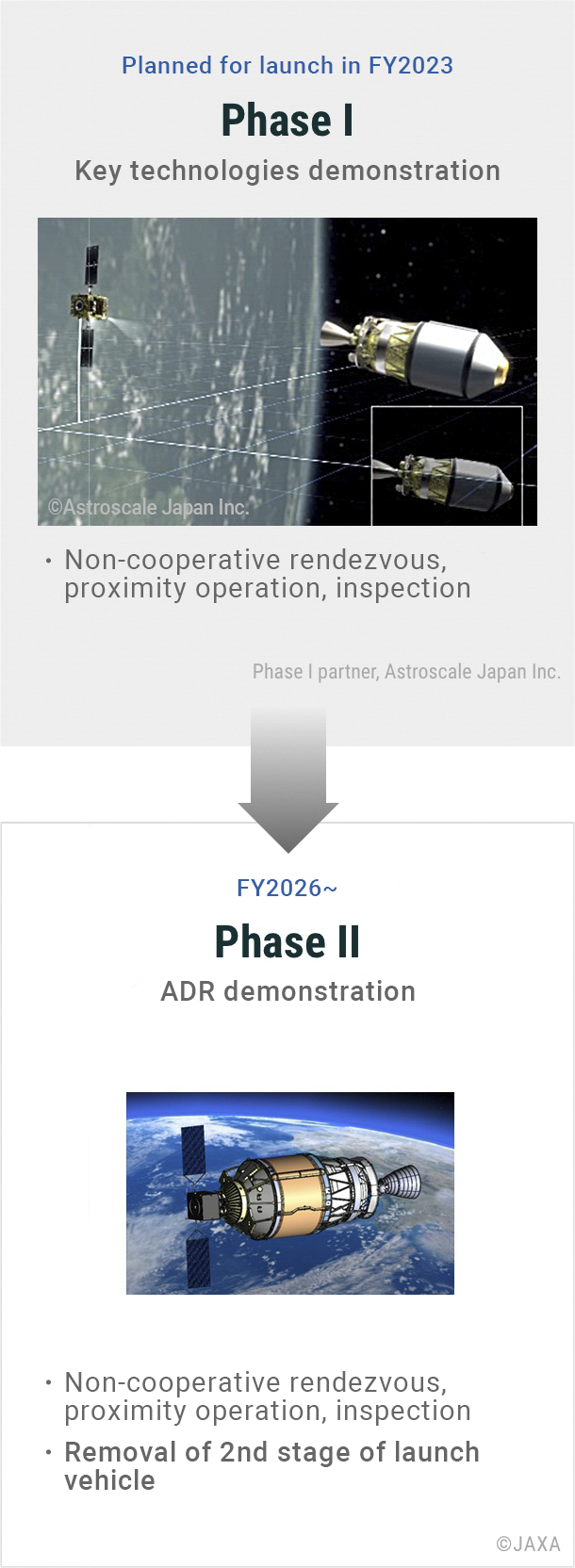
New attempts to encourage private sector to commercialize
In the past, most JAXA Projects have provided "satellite development specifications" and "design standards" and procured satellites from private sector.
In CRD2, a new attempt was made to procure "services" and "R&D results" by presenting "service specifications" and "safety requirements".
Private sector design, manufacture, test, and operate satellites that satisfy "service specifications" and "safety requirements". Companies can develop satellites in their own way, and can set up and conduct their own technology demonstration missions as well as the services required by JAXA.
JAXA also provides technical support to companies by offering technical advice, test facilities, and intellectual property of research results.
Both JAXA and the private sector contribute funds for the development and operation of the satellite, which we call a partnership-type contract.
Partnership contract
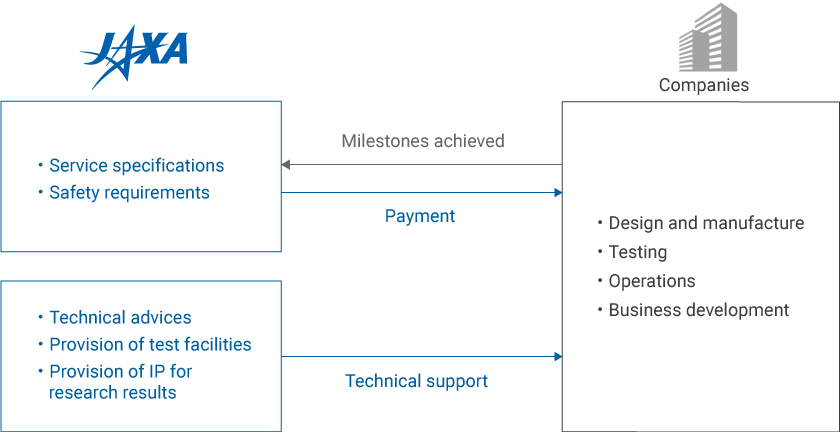
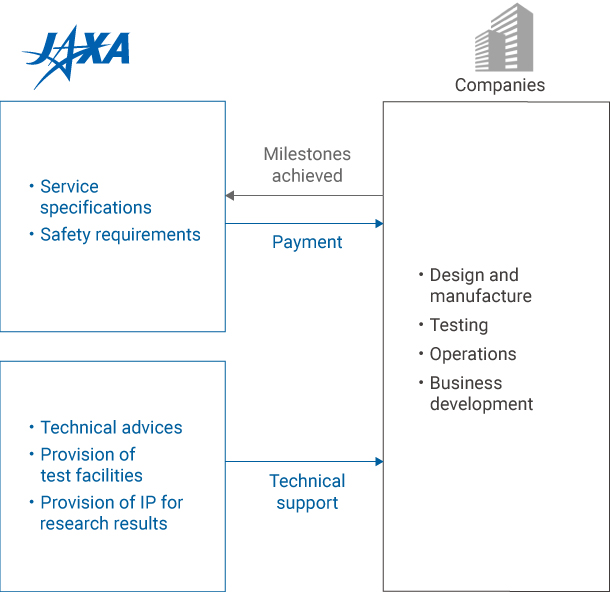
Advantage: Strong support for commercialization
- The system will guide private sector to set up and acquire competitive development processes at their own discretion, as they struggle between cost reductions (since the payment amount is fixed, lower costs will directly lead to higher profits) and reliability/quality improvement (full payment will not be made unless the service is a success).
- Private sector can obtain technical support from JAXA
- Private sector can incorporate innovations for cost reduction and competitiveness into development specifications and management/technical standards.
- Private sector can apply a non-waterfall development process.
- Private sector can plan and conduct their own technology demonstration missions.
- The use of staged payments, rather than lump-sum payments after service completion, lowers the barrier to entry for venture companies without large amounts of capital.
Target space debris
JAXA believes that it is effective to improve the space environment by first working on large space debris removal.
Targets are selected based on:
- Rocket Debris of
Japanese origin - Actual rocket upper stage debris that exists in low earth orbit for long time
- Orbit altitude
about 600 km (considering the risk of debris generation in the demonstration)
- H2A R/B, SSC※1 :33500, International designator: 2009-002J Upper stage of the rocket that launched the GOSAT
It is approximately 11 meters long, 4 meters in diameter, and weigh approximately 3 tons.
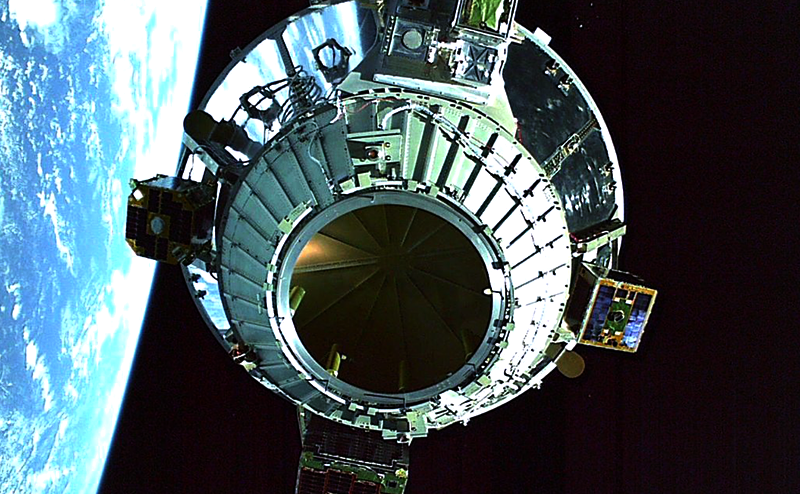
(Image acquired when separated from the GOSAT satellite in 2009)
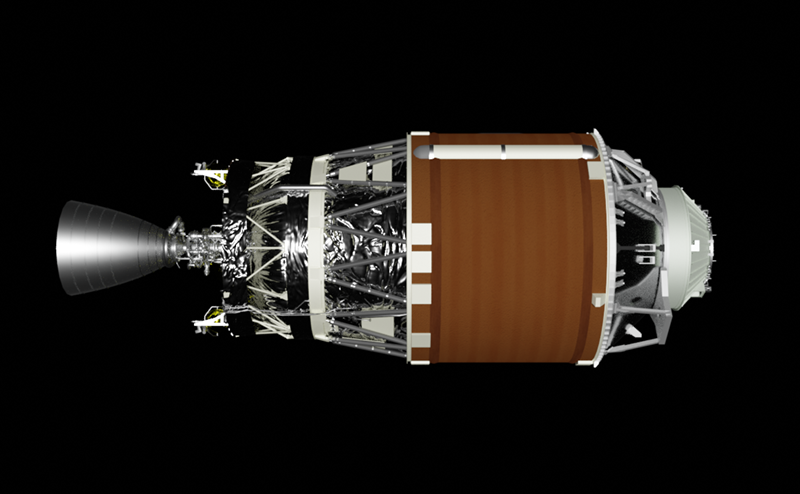
(Insulation, which was orange at launch, is estimated to have turned dark brown due to UV light)
※1 SSC: Space Surveillance Center catalog number
Outline of CRD2 Phase-Ⅰ
In CRD2, JAXA presents "service specifications" and "safety requirements" and procures "services" and "R&D results". Then, private sector design, manufacture, test, and operate satellites that satisfy the "service specifications" and "safety requirements".
JAXA's required services
and corporate mission
Companies will take advantage of this opportunity to set up technology demonstration missions that they themselves consider necessary as well as the services required by JAXA
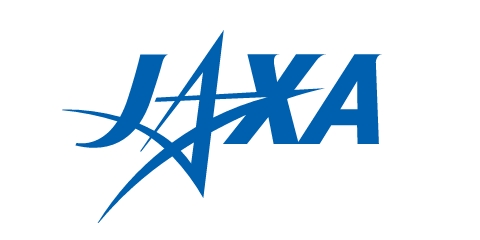
- 01.Rendezvous performance reporting service
- 02.Fixed-point observation service
- 03.Fly-around observation service
- 04.Mission termination service
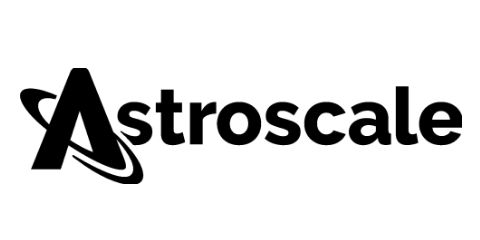
- 01.Target inspection and diagnosis
- 02.Close approach to target
- 03.Extra missions
Service specification of Phase-Ⅰ




Safety requirement of Phase-Ⅰ
Key Requirements
(JERG-2-026,JMR-003C)
- Unintended generation of debris due to collision with a target and loss of debris prevention function is considered a "critical hazard".
- Hazard analysis of the entire system is required, and safety measures based on failure tolerance are required for the identified hazard causes.
- Design trajectories that do not intrude into the safety area except for intentional cases.
- Design to allow for one failure for unintentional intrusion into the safe area or deviation from the approach path.
Mission Scenario
of Astroscale
& Commissioning





Outline of Demonstration Satellite
Astroscale, a partner company in CRD2 Phase-Ⅰ, is developing a demonstration satellite. The following is an overview of the demonstration satellite, named ADRAS-J
Outline of ADRAS-J
- Weight (time of launch); Approx. 180 kg
- Full-range (from rocket launch to extreme proximity to target orbit) rendezvous and near-perimeter operational capability for non-cooperative objects.
- Mission components include a rendezvous sensor group, a visible light camera for J-services, and lighting.
- Scheduled to launch by Electron rocket from New Zealand in JFY2023
Astroscale designs, manufactures, tests, applies for permits, launches, and operates demonstration satellites.
